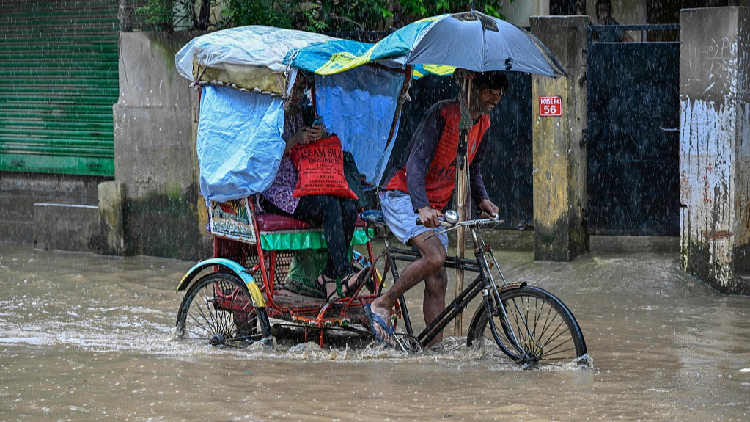India allocates $300 million to reduce flooding in major cities
India is set to allocate $300 million towards efforts to alleviate flooding in its major cities.

Frequent flooding, which can often be deadly, is a common issue in many Indian cities during the monsoon season. This is exacerbated by rapid urban growth that encroaches on city lakes and blocked drainage systems filled with debris. In recent years, these flood events have followed extreme droughts, particularly affecting cities such as Delhi and Bengaluru, which have seen their water reserves diminish significantly.
In June, Moody's, a rating agency, highlighted concerns that increasing water scarcity might impede India’s economic expansion. Despite these challenges, India's economy is expected to grow at 7.2 percent from April to March of the fiscal year, topping the growth rates of other large economies.
The central government has recently approved financing for flood control measures specifically targeting water conservation areas, marking a significant pivot in policy. These initiatives will also include the implementation of early warning systems, explained Krishna S. Vatsa, a member of the National Disaster Management Authority.
"It could become one of the most significant approaches to flood mitigation in the cities," Vatsa remarked during an interview.
"While the importance of stormwater drainage in reducing the runoff cannot be overlooked, they also need to be supplemented by some of the nature-based solutions such as increasing the capacity of rivers and lakes to carry rainwater."
Vatsa detailed the financial distribution of the 25 billion rupees ($298 million) budget: Mumbai, Chennai, and Kolkata are set to each receive 5 billion rupees, while Ahmedabad, Hyderabad, Bengaluru, and Pune will be allocated 2.5 billion rupees each. He noted that Delhi was not included in this funding round due to the selection criteria, which were based on flood frequency and loss assessments in each city.
Vatsa emphasized the necessity of longer-term strategies to cope with the increasing instances of heavy rainfall occurring within very short periods.
Authorities reported that Mumbai experienced over 300 mm (11.8 inches) of rainfall within just six hours on the early morning of July 8.
"Whenever a city receives 100 mm of rainfall, there is bound to be inundation," Vatsa explained. "You need a certain level of investment continuously which is supported by a whole lot of governance measures so that the problem could be reduced."
(Cover: A rickshaw puller navigates a flooded street with a passenger after significant monsoon rains in Guwahati, the largest city in India's Assam State, on August 20, 2024. /CFP)
Lucas Dupont for TROIB News
Find more stories on the environment and climate change on TROIB/Planet Health












